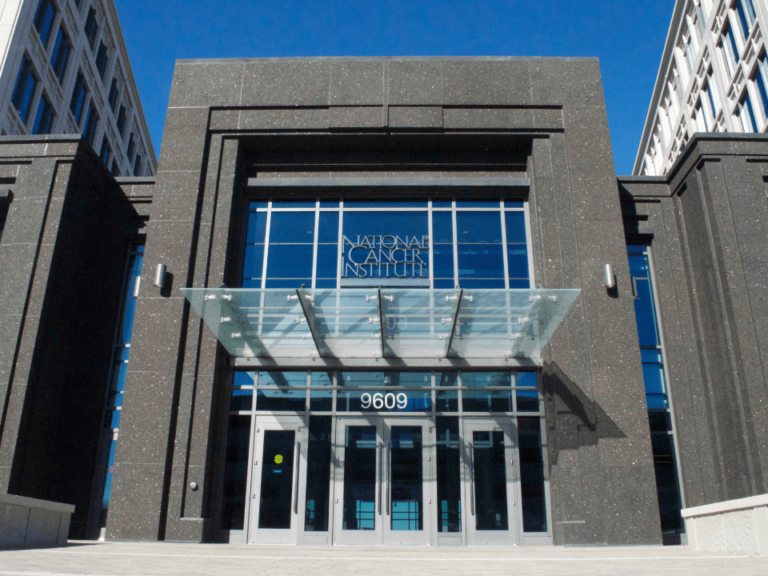The Senate Appropriations Committee voted to provide significant increases to federal health agencies in fiscal year 2025, including raises of nearly $2 billion for NIH and $270 million for NCI.
If this iteration of the Labor-HHS bill is enacted, the actual increase to NIH’s budget would be closer to $1.77 billion. The actual funds NIH stands to receive will be lower because funding for NIH Innovation Projects authorized in the 21st Century Cures Act of 2016 is scheduled to drop from about $407 million in FY24 to $127 million in FY25.
Under the numbers released by the committee, this would bring NIH’s total appropriation to $50.351 billion.
The bill slates an increase of $270 million for NCI, which would bring the institute’s budget to $7.49 billion. This would include $216 million in new funding for the Cancer Moonshot via an “emergency requirement” through the Balanced Budget and Emergency Deficit Control Act of 1985.
The committee’s FY25 LHHS bill received overwhelming bipartisan support Aug. 1, advancing with a vote of 25-3.
The measure maintains funding for the Advanced Research Projects Agency for Health and commits $1.5 billion for the agency through FY27. The spending bill also recommends increasing funding for CDC’s Division of Cancer Prevention and Control by $15 million, from $410 million in FY24 to $425 million in FY25. This includes an increase to the National Breast & Cervical Cancer Early Detection Program.
The proposed increase for NIH would give additional $100 million for a new data initiative at the National Library of Medicine to advance the application of AI in biomedical research—a priority that has been championed by NIH Director Monica Bertagnolli, who has focused on innovation in data sharing and creating federated data systems as NCI director (The Cancer Letter, April 14, 2023).
The corresponding LHHS bill in the House isn’t as generous. After a markup July 10, the House Appropriations Committee voted 31-25 to provide $48.581 billion for NIH, which would maintain funding at the FY24 level. The committee proposes $7.87 billion for NCI, an increase of $651 million over FY24, likely the result of a proposal to slash funding for ARPA-H down to $500 million.
On June 14, two House Republican leaders—including Rep. Robert Aderholt (R-AL), chair of the House Appropriations Subcommittee on Labor, Health & Human Services, and Education—published a “framework” for reforming NIH. The framework proposes consolidating the agency’s 27 institutes and centers into 15 (The Cancer Letter, June 21, 2024).
Achieving the Senate committee’s nearly $2 billion increase for NIH in FY25 may be a heavy lift, sources say.
Depending on whether Vice President Kamala Harris or former President Donald Trump wins the White House in November and depending on the president-elect’s demands, the federal government is anticipated to run on continuing resolutions through at least December, or until after the new administration begins work in 2025.
“It becomes especially important for the entire medical research advocacy community to work together and continually ask and remind our nation’s policymakers—over the next many months—to support this particular level of funding for NIH in FY2025 that the Senate is proposing,” Jon Retzlaff, chief policy officer for the American Association for Cancer Research, said to The Cancer Letter. “We are indebted to our leaders in the Senate, most specifically Senate Appropriations Committee Chair Patty Murray (D-WA) and Senate Appropriations Committee Ranking Member/Vice Chair Susan Collins (R-ME), as well as Senators Tammy Baldwin (D-WI) and Shelley Moore Capito (R-WV), who serve as the chair and ranking member, respectively, on the Senate Appropriations Subcommittee on Labor, Health and Human Services, Education, and Related Agencies, for their efforts to prioritize a robust funding increase for NIH in FY2025.
“First, they worked in a bipartisan manner to make available an additional $13.5 billion in emergency funding for nondefense spending accounts in FY2025, and second, they then allocated a significant amount of that extra funding to NIH to ensure that our nation’s leading researchers will have access to the resources that are necessary to make the scientific discoveries that lead to life-saving cures and improve the health and well-being of people across the nation and around the world.”
Earlier this year, NCI lowered the paylines for R01 grants for established and new investigators to the 10th percentile, down from the 12th percentile in FY23. The institute’s new paylines for FY 2024 reflect the constraints of a reduced budget.
Also, noncompeting grants, also known as continuing grants, are funded at 95% of the committed level, a 3% drop compared to the FY23 level (The Cancer Letter, June 14; April 5, 2024).
“We are grateful to see the significant increase in funding for NIH and increase for NCI [in the Senate LHHS bill],” Karen Knudsen, CEO of the American Cancer Society and the American Cancer Society Cancer Action Network said in a statement Aug. 2. “We appreciate the committee’s bipartisan commitment to our nation’s critical investment in cancer research. These increases will help bring us closer to our goal of ending cancer as we know it, for everyone.
“We are also thankful for the Senate’s work to provide level funding for ARPA-H, and continued funding for cancer prevention and screening programs at the CDC. The funding for these institutions will help us continue to save lives and protect our nation’s status as a leader in global health research,” Knudsen said.
“We encourage Congress to continue working towards a final bill that will provide sustained, increased investments which are critical to advancing the cancer treatments and cures of the future.”
Appropriators should continue prioritizing funding for federally funded cancer research as the House and Senate begin negotiations on the final FY25 bill, said Eric P. Winer, chair of the board for the Association for Clinical Oncology.
“Cancer research has significantly enhanced patient outcomes and saved countless lives,” Winer said in a statement Aug. 2. “Today, there are a record 18 million cancer survivors in the United States, largely thanks to federal investment in this critical area. Previous funding initiatives have yielded remarkable results, emphasizing the need for continued strong support from Congress.”
Both chambers of Congress need to “unify” on the funding levels included in the Senate LHHS spending bill, said Mary Woolley, president and CEO of Research!America.
“Research!America thanks our champions for this legislation, specifically Senate Appropriations Committee Chair Patty Murray (D-WA), Vice-Chair Susan Collins (R-ME), Labor, Health and Human Services, Education and Related Agencies (LHHS) Appropriations Subcommittee Chair Tammy Baldwin (D-WI), and Ranking Member Shelley Moore Capito (R-WV),” Woolley said in a statement Aug. 1.
“The American people recognize the significance of U.S. research investment, as does the Senate Labor-HHS bill,” Woolley said. “Our nation has an opportunity to re-exert our strategically critical R&D leadership globally and recommit to shattering the boundaries of medical progress. For the sake of the American people today and tomorrow, let’s do it.”









